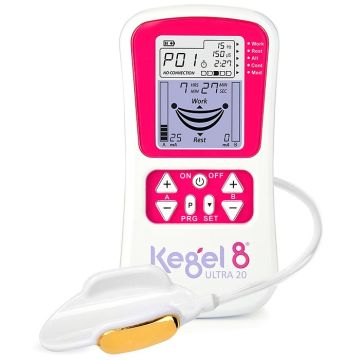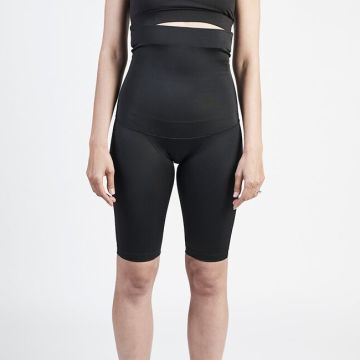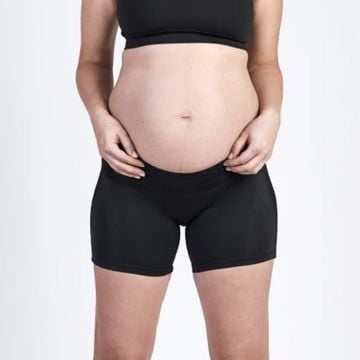
Recovering from a caesarean section (C-section) can be a challenging and delicate process for new mothers. In this article, we will explore seven effective strategies to help expedite and enhance the recovery journey after a C-section. From practical self-care tips to gentle exercises and emotional support, these recommendations are designed to empower mothers as they navigate the post-operative period.
1. Protect and strengthen your pelvic floor muscles
Pregnancy and childbirth can place significant strain on the pelvic floor muscles, causing conditions such as incontinence and prolapse. Having a c-section does not stop such conditions from occurring, one prevalent misconception surrounding childbirth is that a C-section safeguards the pelvic floor from damage. The pelvic floor comprises muscles, ligaments, and tissues that provide support to the pelvic organs such as the bladder, uterus, and bowel. Weakened muscles or stretched ligaments can lead to various forms of incontinence. Strengthening and protecting the pelvic floor muscles is key to reducing the risk of incontinence and expediting C-section recovery. Strengthening these muscles can be achieved through kegel exercises and can be introduced shortly after a C-section, gradually incorporating walking in the following weeks. The advantages of postpartum exercise are well-documented, encompassing physical benefits like improved posture, core strength, and back health, as well as psychological well-being.
2. Focus on healing wounds and stitches with compression!
One aspect often overlooked in C-section recovery is the accelerated healing that can be achieved through Rest, Ice, and Compression applied to the C-section wound. It is important that the compression is gentle and consistent, not only to aid in healing but also to facilitate daily functioning during the recovery period. Recovery shorts and leggings provide constant gentle compression to swollen and sutured areas, assisting with back support while healing abdominal muscle separation (DRAM) and perineal trauma/stitches. Scar minimising massagers and tapes such as Scargone, can also assist in reducing the redness and visibility of your scars.
3. Don't forget to think about Abdominal Muscle Separation (DRAM)
Healing Diastasis Recti Abdominis Muscles (DRAM) poses additional challenges during C-section recovery, adding an extra layer to the healing process, but is equally as important. The body operates as a complex interconnected system, where various organs and muscle groups rely on each other for optimal function. The abdominal muscles, pelvic floor, and back muscles are intricately linked, with DRAM potentially impacting pre and post-natal women in various ways. This condition can compromise trunk stability and contribute to issues like pelvic floor dysfunction, back and pelvic pain, and hernias. If left unaddressed beyond the 4-week postnatal mark, DRAM may disrupt abdominal muscle function. It is crucial to address DRAM promptly and consider all resulting complications, particularly those that significantly impact daily life, such as continence.
4. Try support clothing to improve mobility
Mobility is essential for new mothers as they work towards their healing journey and adapt to the physical demands of caring for their new-born. Recovery shorts or leggings offer the necessary support to enhance your movement after childbirth, simplifying tasks like lifting, feeding, bathing, and tending to your baby.
5. Look after your mental health as well
The postpartum period poses significant challenges for women and their families. Mental and emotional well-being are equally crucial as physical health, as they are interconnected. Perinatal anxiety and depression are prevalent, diverse, and non-discriminatory conditions that can have severe consequences if not addressed. If you or someone you know is grappling with perinatal anxiety and depression, seeking assistance is highly recommended.
6. Fitness can help your recovery
It is commonly believed that maintaining fitness levels before and during pregnancy can lead to a quicker recovery post-C-section. Remember, it's never too late to begin prioritizing your health, even if you are already pregnant. Many women now focus on self-care from the moment they conceive. Consult a healthcare provider for a safe and appropriate exercise regimen.
7. Relax and take it easy
Around 6-12 weeks post C-section, once you have regained your mobility and feel prepared, you may resume exercising with the approval of your healthcare provider. Start by gradually introducing gentle core exercises, resistance/weight training, and low-impact cardio activities. It is recommended to wait at least 3-6 months before returning to running and high-impact exercises to allow for proper healing of your abdominal and pelvic floor muscles. Consult with a women's health physiotherapist for personalized guidelines and exercises tailored to your specific needs.








